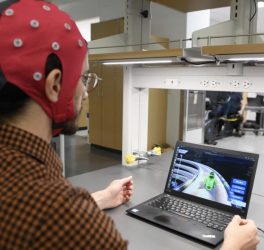
Levitate Technology has announced the launch of The Levitate Gravel Sole. Levitate is a Danish startup company that makes and sells running blades for an affordable price directly to the consumer. The Levitate Gravel Sole is the first-ever trail and trekking specifically designed sole for a running blade, and it will give the user the ideal grip on all kinds of naturally occurring terrains.
Levitate has listened to its customer’s demands and developed a replaceable gravel sole for amputees. The Levitate Gravel Sole is designed for rough surfaces where extra traction can be crucial. Many of the Levitate everyday-athletes have requested this product to take their Levitate Running Blade to roads they never thought they would be able to go. Gravel roads, off-roads, and mountain trails.
Being an active lower limb amputee himself, the CEO and founder of Levitate has a close relationship with the product as well as with other existing users of The Levitate Running Blade. During the development process, these people have tested prototypes and given their valuable feedback, which has been closely considered and implemented throughout the whole design process.
The design of the outsole ensures a safe user experience on all surfaces, while the carefully selected material makes the product extremely durable without compromising its weight.
The Gravel Sole comes in three different colors and is easily changeable so you can match it to your favorite running shoes.
Many people expressed that they wanted a sole that did not sound different from their intact leg. It should be a soft and discrete sound to avoid any feeling of stigmatization. This is why the sole is made from direct-injected PU, which facilitates a subtle sound down the path.
The Levitate Gravel Sole will give you the freedom to play – on all surfaces.








